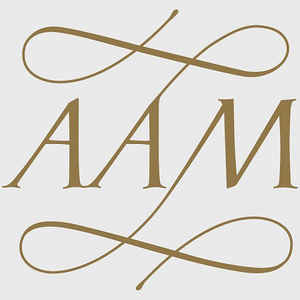Academy of Ancient Music facts for kids
Quick facts for kids Academy of Ancient Music |
|
|---|---|
| Orchestra | |
 |
|
| Short name | AAM |
| Former name | Academy of Vocal Music |
| Founded | 1726 (revived 1973) |
| Location | Cambridge |
| Concert hall | Barbican Centre |
| Music director | Laurence Cummings |
The Academy of Ancient Music (AAM) is a special orchestra from Britain. They are based in Cambridge, England. They play music using old instruments, just like it would have been played long ago. This is called "historically informed performance."
A talented musician named Christopher Hogwood started the AAM in 1973. He named it after an older music group from the 1700s. That group was first called the Academy of Vocal Music. The musicians in the AAM use either real old instruments or new copies of them. They mostly play music from the Baroque and Classical periods. Sometimes they also play Romantic music. In recent years, they have even played some new songs written for old-style orchestras.
Contents
The First Academy of Ancient Music

The first Academy of Vocal Music started in London, England. This was in 1725 or 1726. The first meeting happened on February 1, 1726. We don't have records that say exactly why they started the group. But a writer named John Hawkins said in 1770 that it was to "promote the study and practice of vocal and instrumental harmony." This means they wanted to help people learn and play music.
From the very beginning, Agostino Steffani was chosen as their honorary president for life. In 1731, the group changed its name to the Academy of Ancient Music. More and more musicians joined them. Famous composers like William Croft and Maurice Greene were members. Even though George Frideric Handel was never a member, the group studied and played his music. They also played music by other composers of their time. Leaders of this old group included Johann Christoph Pepusch and Samuel Arnold.
A music expert named H. D. Johnstone said the Academy of Ancient Music was "the most famous and influential institution of its kind in eighteenth-century London." This means it was a very important music group in London during the 1700s.
The Modern Academy of Ancient Music
In 1973, the Academy of Ancient Music was started again. This time, it was by the British conductor and harpsichord player, Christopher Hogwood. His goal was to play music from the 1700s and early 1800s. They wanted to use instruments from that time period. When they perform music with singing, they often join with the Academy of Ancient Music Chorus. Sometimes they work with other choirs too.
The AAM was the first orchestra to record all of Mozart's symphonies. They used instruments from Mozart's time. Since then, the AAM has recorded all of Mozart's piano concertos. They worked with a fortepiano player named Robert Levin. They also recorded all of Beethoven's piano concertos and symphonies. They have recorded many of Haydn's symphonies too.
The AAM has made over 200 other recordings. These include operas like Purcell's Dido and Aeneas and Handel's Orlando. They have also recorded many other types of music.
New Music for Old Instruments
The AAM has also started asking composers to write new music for them. This was a new idea for an orchestra that plays old music. The first new piece they recorded was John Tavener's Eternity's Sunrise. People really loved it! This led to two more new pieces by Tavener. In 2001, they played David Bedford's Like a Strand of Scarlet. In 2003, the AAM performed Arcangelo by John Woolrich. This piece was written to celebrate the 350th birthday of Arcangelo Corelli.
In 2006, they celebrated Mozart's 250th birthday. They asked Thea Musgrave to write a piece called Journey into Light. This piece was meant to go along with Mozart's Exsultate, jubilate. More recently, in 2012, they asked Mahan Esfahani to create a new version of Bach's The Art of Fugue. They performed this at the BBC Proms concert series.
The AAM has made many CDs with Harmonia Mundi. These include Mozart's Zaïde and Christmas music. They have also recorded violin concertos by J.S. Bach and Vivaldi. Their choral recordings include music by Bach, Handel, and Purcell. They have worked with choirs from King's College, Cambridge and New College, Oxford. With Richard Egarr, they recorded Handel's instrumental music. They also recorded Bach's six Brandenburg Concertos and his St Matthew and St John Passions.
In 2013, the orchestra started its own record label called AAM Records. Their first album came out in October of that year. The AAM is currently the Orchestra-in-Residence at the University of Cambridge. This means they have a special connection with the university. In 2020, the Teatro San Cassiano announced that the AAM would be its first associate ensemble.
Who Leads the AAM?
In 1996, the AAM chose Paul Goodwin as an associate conductor. They also chose Andrew Manze as an associate director. These roles supported Christopher Hogwood. In 2003, Manze left his role. In 2005, Richard Egarr took his place. On September 1, 2006, Egarr became the music director of the AAM. Hogwood then became the "emeritus director," which is an honorary title.
Richard Egarr finished his time as music director at the end of the 2020–2021 season. In November 2020, the AAM announced their new music director. It was Laurence Cummings, and he started in the 2021–2022 season.
Many people have worked as general managers or chief executives for the AAM. In June 2020, John McMunn was chosen as the new chief executive. He started on September 1, 2020.
Music Directors of the AAM
- Christopher Hogwood (1973–2006)
- Richard Egarr (2006–2021)
- Laurence Cummings (2021–present)
See also
 In Spanish: Academy of Ancient Music para niños
In Spanish: Academy of Ancient Music para niños


